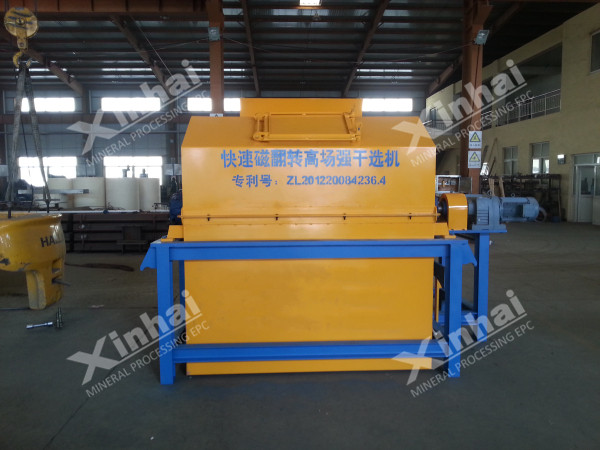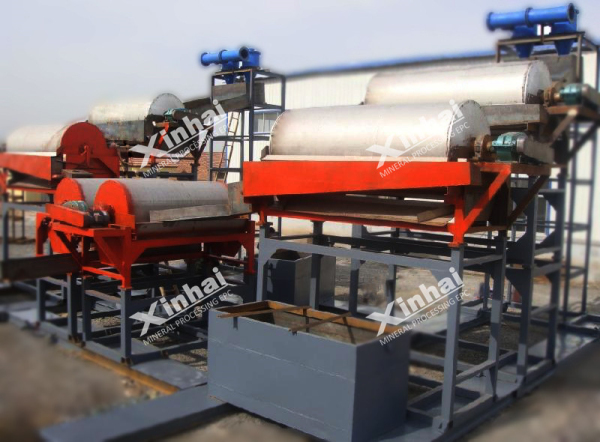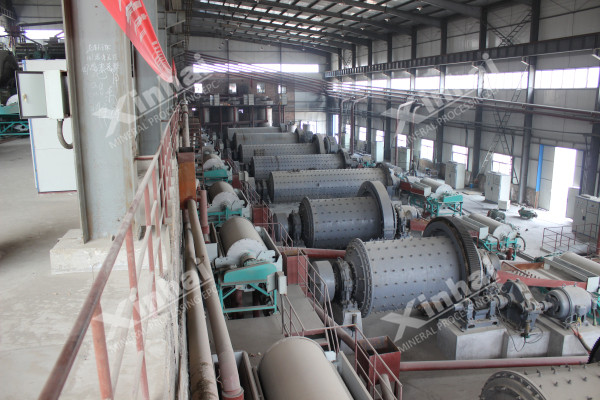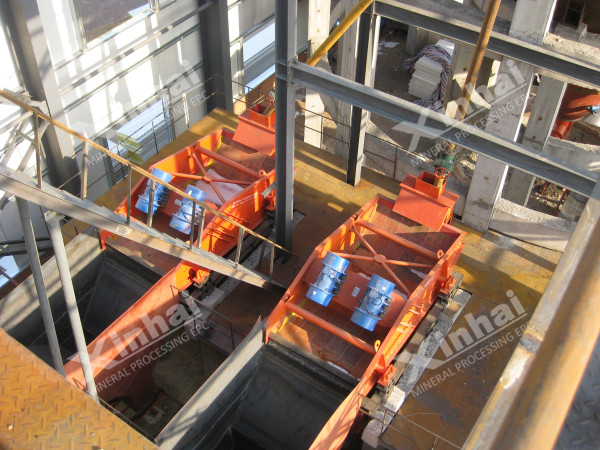Ultra poor iron ore means that the grade of raw ore is far lower than that of ordinary iron ore, and the grade of ordinary iron ore is lower than 20%, which can become ultra poor iron ore. As the grade of raw ore is too low, processing this kind of ore will increase the cost of beneficiation. The following principles should be followed in the selection of beneficiation process for ultralean iron ore: large processing capacity of raw ore, simple process flow, tailings should be discarded as soon as possible to reduce the amount of ore to be grinded, thus reducing the cost of beneficiation.

That is, the dry magnetic separator is used after the ore is roughly, moderately or finely crushed, and most of the qualified tailings are discarded.
The research shows that the raw ore with TFe grade of 11% will be roughly crushed and then discarded through single magnetic separation (dry separation) to obtain a crude concentrate with TFe grade of 39.74%. 1t concentrate will be selected from 5t raw ore, so the grinding amount can be reduced by 4/5, the production cost can be reduced, and the iron recovery rate can reach 72.20%. After wet grinding and wet magnetic separation of the selected coarse concentrate, the TFe grade of the iron concentrate produced is 66.95%, the TFe grade of the tailings is 9.07%, and the metal recovery rate can reach 89.28%.

When the grain size of gangue mineral is fine, it is necessary to adopt warm magnetic separation to cast the tail.
For example, the pre concentration tailing effect of a certain iron ore coarse (refers to the particle size above 10mm) is very poor. For example, if 10% of tailings are thrown out by dry magnetic separation, the grade is improved by less than 2 percentage points, while the loss rate of magnetic iron is more than 3%.
By using the high-pressure roller mill wet magnetic separation two-stage grinding process, the raw ore processing capacity can reach 6.5 million tons/year, and the concentrate output can reach 190 tons/year. At the same time, the concentrate grade can be increased from 64% to more than 65%, with significant economic benefits.

In the beneficiation process of ultralean iron ore that is fragile and easy to grind, the use of stage grinding and stage separation process can discard some tailings at a coarser particle size, reduce the amount of ore in the lower grinding section, save the investment in grinding equipment and production costs, and also help to timely recover the separated mineral monomer, to avoid over grinding and improve the recovery rate of useful minerals.
For example, a mining company adopts the stage wet grinding magnetic separation process for the concentrator, and uses two single-stage ball mills to one two-stage ball mill for the low-grade coarse concentrate. After grinding and wet magnetic separation of the coarse concentrate with a grade of more than 25%, the final iron concentrate grade is more than 66%.
Reverse flotation is applied to the magnetic separation concentrate of lean iron ore to improve the final concentrate grade. The reverse flotation process can better adapt to the changes of ore properties in the mining process, and has higher beneficiation efficiency. Because the reverse flotation process makes full use of the density difference between iron minerals and gangue minerals, under the condition of effective reagent system, the flotation separation of low-density gangue minerals such as quartz and high-density iron minerals will be better, and the effect of iron increase and silicon reduction is significant, which can not only greatly improve the concentrate quality, but also reduce the beneficiation cost.
In the process of stage grinding and stage separation of ultralean iron ore, the two-stage ball mill and high-frequency vibrating fine screen form a closed circuit. The coarse products on the screen are returned to the ball mill for regrinding, and the products under the screen are separated. The regrinding of middling ore can avoid bringing the intergrowth of iron minerals and gangue minerals into the magnetic separation iron concentrate during the separation process, thus improving the grade of iron concentrate and effectively reducing the regrinding amount and grinding cost.

Although the raw ore grade of the super poor iron ore is low, it has large reserves, is exposed to the surface, and is easy to mine. Therefore, the construction period of the concentrator is short and the investment is small. If the beneficiation process of super lean iron ore is reasonably designed, the benefits will be more objective. At present, it has become the target of development and utilization of many individual and small collective enterprises.